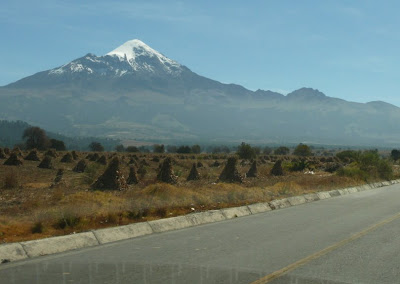
I frequently see questions online from people seeking information about Mexico for school papers or whatever. I thought I would contribute some facts about Sonora. First, according to Encyclopedia.com:
- Sonora is the second largest state in Mexico with an area of 70,484 square miles.
- Hermosillo is the capital.
- Sonora is the most heavily irrigated state in Mexico.
- Sonora is a leading national producer of cotton and wheat.
- Cattle raising and fishing are important industries.
Of course, you're going to want to pepper your paper with some fun facts as well if you're really going for a good grade. Here are 10 fun facts I've gleaned from personal experience or observation while traveling in Sonora.
Fact 1: A drunk, American retiree will fall on his face in Puerto Penasco as easily as a drunk, American college kid.
Fact 2: If you're really hungry and stop in desperation at a dirt-floored, roadside restaurant outside of Hermosillo (where your daughter refuses to eat) and order a watery shrimp cocktail, you will pay. Dearly.
Fact 3: The boulders you just avoided in the road, thus saving your front-end as you were coming around a curve outside of Magdalena, did not roll down from the hillside as it would appear. They were placed there intentionally by the local road crew as a safety warning about the roadwork ahead.
Fact 4: There are exactly seven Coronas, four margaritas, three tequila shots and one late-night beef taco in a Rocky Point hangover.
Fact 5: Contrary to what the nice man says, the bright-yellow plastic turtle that you are eyeing in the Nogales market was not hand painted by his uncle in Guaymas.
Fact 6: Per the bright-yellow plastic turtle in Fact 5; contrary to what the nice man says it is not "almost free."
Fact 7: The intoxicated woman who jumped up from her table at a crowded Manny's Beach Club and frantically yelled "There's a whale! There's a whale!" is actually pointing at two kids snorkeling.
Fact 8: After drinking exactly four cervezas on the balcony of your condo, you will have figured out how to quit your job, move to San Carlos and make a living picking up seashells.
Fact 9: You may find out the hard way that the smiling woman sitting in front of the PEMEX bathroom with a roll of toilet paper is not insane, but is actually your friend. For a peso or two.
Fact 10: Sixty-three percent of U.S. citizens become 37 percent stupider when they cross the border. Particularly, but not always, during Spring Break in Puerto Penasco.
That's all for now. Good luck on your paper. Or whatever.








